I admittedly apologize for all the quotes, metaphors, and analogies, but it’s the best way to explain set-ups and pay-offs.
Vladmir Propp described narrative as: lack, lack liquidated. Or, alternatively, Kurt Vonnegut described the idea of “the hole”: somebody’s in trouble and keeps digging themselves in deeper. Joseph Campbell built a huge flowchart describing this process in stories ranging (with some stretching) to the “narratives arcs” of Jesus Christ and Cinderella, and were used as the template for the heroic epic adventures of Luke Skywalker, Neo, and Harry Potter.
We filmgoers go to the movies (as readers read, or theatergoers go to plays) with an expectation: we want to get something out of it. What is that something, exactly? It can vary. A fright, a laugh, a tear, whatever. In any event, it is something, and, whether you are immediately aware of it or not (and if you plan to write, you’d best get aware of it real fast) a successful film makes a narrative contract between viewer and media: you are going to receive X, and you are going to receive X in a way you do not expect. And who’s job is it to make sure X is received and it remains unseen? That falls to you, the ever-suffering writer.
Russian playwright Anton Chekov said, “If in Act I you have a pistol hanging on the wall, then it must fire in the last act." What Chekov is describing is what screenwriters call set-ups and pay-offs.
Set-ups and pay-offs are lack and the liquidation of lack. They are jokes and punchlines. They are tragic bits of foreshadowing. They are what is expected and what is given in an unexpected way.
Unexpected is important here. If your viewer gets what he is expected in an expected way, he is bored. Despite having been given what he is promised, he is disappointed. How you wrap your present is just as important as what you’re presenting.
Think of a magician, who you expect to do something magical. While you are watching his performance, he performs a bit of unexpected legerdemain that . You are the magician here. And what magicians do to do their tricks is not just sleight of hand, but misdirection. You draw the audience’s eye to something else, so you they aren’t paying close attention to your hands. Maybe a flourish with your arms, or brushing your sleeves, or whatever.
One of the best examples of set-ups and pay-offs I can think of is the first Back to the Future (Zemeckis, 1985.) My favorite example of a good set-up and pay-off is the business with the clock tower. In the set-up scene, Marty and Jennifer are trying to set up their date in the cabin. There’s a woman handing out flyers regarding saving the clock tower, which Jennifer uses to write her number on. We aren’t interested in the old lady or the clock tower, we’re interested in Marty and Jennifer’s interactions (watching where we’re supposed to.) Later, as Marty’s trying to figure out a way to fix his time machine so he can return to 1985, he looks at the other side of the flyer Jennifer wrote her number on, and suddenly we all remember about the clock tower.
The movie has a lot of other great set-up’s and pay-off’s as well, but that’s an excellent example. Another is Marty’s love of rock and roll, he’s first denied at the battle of the bands audition (which also shows he’s a pretty smokin’ guitarist,) but then when he travels back in time, he gets to play on that same stage, wow the audience, and influence Chuck Berry (via his cousin, Marvin Berry.) There are plenty more, too.
So, how do you make set-up’s and pay-off’s? Two ways. While I’m writing, I usually come up with the pay-off first, and then figure out how to do the set-up, which is kind of a backwards way of doing it, but effective. Say, for example, to use the Chekov gun analogy, if somebody’s supposed to get shot, I’ll go back and set up a gun earlier in the script (as far apart as I can feasibly allow so the audience isn’t thinking about that gun.)
A set-up or pay-off can come out of nowhere without the other, but this is jarring and can alternatively shock and confuse your audience or produce a comedic effect. For example, although I love this movie, in the campy Adam West Batman film (dir. Neil Hefti, 1966,) Batman produces his infamous Bat Shark Repellant Spray. This is absurd (and within the show’s goals of high camp,) but had this been one of the more recent Chris Nolan Batman films, he should have had a scene where Batman was studying animal repellants (and Alfred chiding him for him paranoid and overly prepared.) When he runs into a shark in the end of the second act…boom. Bat Shark Repellant. And then it’s alright. We as the audience got a set-up, and a pay-off, instead of just a pay-off.
Having just a set-up can create a sense of lack that remains unfulfilled. You expectedly await the gag to come, and you wait, and wait, and wait... It’s like those cartoons with Bugs Bunny and Daffy Duck where Daffy rigs the xylophone to explode when a certain note is paid. Bugs keeps missing that one note. We as the audience, although not necessarily desiring Bugs Bunny to explode, want to see a KABOOM. Daffy gets just as frustrated and shows him how to play it, and we get our earth-shattering kaboom.
Or, alternatively, the “shave and a haircut” knock from Who Framed Roger Rabbit we, like Roger, are dying to hear the last two notes. Dun dunna dun dun… “Shave and a haircut…”
So, make sure to include set-ups and pay-offs in your film, regardless of genre, and you’ll have you audience laughing, crying, screaming, or whatever they asked for.
Next week, we’ll discuss pacing. Good writing!
Monday, April 28, 2008
Friday, April 25, 2008
It Came From Forgotten Filmography Fridays 6

A Mexican Werewolf in Texas (dir. Scott Maginnnis, 2005)
“It’s Hunger Knows No Bounds!”
or “Terror has just crossed the border!”
or “Dey took our joooobs!”
Synopsis: A chupacabra terrorizes a goat-rich Texas border town of Furlogh.
Or, from the back of the DVD box, “Anna and her bored high school friends band together and plot their escape from their suffocating little Texas border town AKA ‘Goat Capitol of the World’ until, a savage attacker preys on the inhabitants - first the goats, then the humans. The local, half-witted cops think it’s a coyote, but Anna and her friends believe the murders are the signature killings of the legendary Latin American urban myth – “El Chupacabra,” or Mexican Werewolf!”
I would like to begin today’s review discussing a movie I mentioned in passing: Conquest of the Planet of the Apes. In interviews, screenwriter Paul Dehn claimed that his inspiration for the ape uprising was the Watt’s riots of the ‘70s. Clearly, the contemporary “immigration ‘crisis’” is an issue for A Mexican Werewolf in Texas. Before even watching the film, I imagine this Mexican Werewolf has snuck over to take maimings away from the lazy gringo Werewolves (and willing to do it for drastically less pay.)
I would like to bring up one major point before we go any further: El Chupacabra is not a werewolf, and is rarely describing in accounts as having wolf-like features at all. Calling it a “Mexican Werewolf” is, frankly, bizarre (it’d almost be like calling Bigfoot “American Yeti.”) Also, the DVD box claims the town of Furlogh as the “Goat Capitol of the World.” Two word definitions.
Capital: A city that is the center of a specified activity.
Ex. Castroville, CA claims to be the Artichoke Capital of the World.
Capitol: A building or group of buildings in which state legislature meets and where other state government offices may be houses.
Ex. The legislature had a long meeting at the capitol.
So, unless these goats are holding state legislature meetings, and on a global level, it is not the Goat Capitol of the World, but the Goat Capital of the World. Sorry, I just found it irritating. They also misprint this on the sign in the movie itself. Which is unfortunate.
Also, I would have just as readily watched a movie entitled El Chupacabra over Mexican Werewolf.
This movie is not just bizarre, it’s award-winningly so. It won four awards at the Festival of Science Fiction, Fantasy, Horror and the Supernatural in Las Vegas. Best Picture, Best Screen Story, Best Supporting Actress, and Best Monster Make-Up Effects. In short, it’s almost like the Mexican Werewolf equivalent of No County for Old Men.
I was, to be honest, expecting this movie to be a lot worse, which is perhaps why I was able to enjoy it. Before that, I’ll get into the bad: The special effects are awful (take a look at the guy in the chupacabra costume in that earlier clip. Or here:)
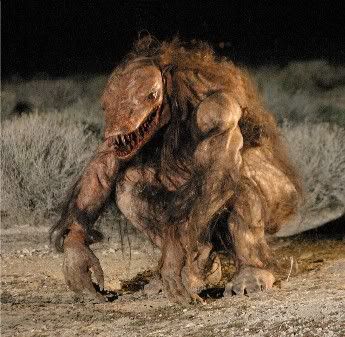
The gore isn’t as awful, but because of the next problem looks less impressive and more like a shiny mess. The film’s entire lighting budget appeared to be “natural lighting and three flashlights,” which made all the nighttime location shots more confusing than frightening. All of the acting is pretty wooden. They also reuse the one same shot for the Chupacabra’s POV in multiple scenes which, although thrifty, becomes pretty noticeable (he goes left, right, then starts to go left again, stops, and goes right.)
Now, the good. This was not as awful as I was expecting it to be. The script, despite some problems (a few scenes I could definitely cut, but at 88 minutes I think they were trying to fatten it up as much as possible,) was good. The characterization and plotting are all passable, and the film is very genre-savvy. The direction and camerawork is actually pretty decent, there are some interesting camera angles and compositions (the scene with the uncle in the hospital, for example.)
The story is about Anna Furlough (whose family the town is after) struggling to escape from the redneck border town and “Goat Capitol” she inhabits. Everyone in this film is a pretty crude stereotype, both the rednecks and the Mexicans. At least they are consistent.
Of course, everything’s turned upside down by the invasion of La Chupacabra. If you’ve seen any monster movie you can fill in the blanks: the sheriff doesn’t believe in it, the adults are mostly baffled as it kills the goats. Then it gains a taste for human flesh. Sort of. It’s complicated and I don’t want to spoil it.
The first 45 or so minutes (the first 3 attacks or so) flow well, but it started to drag for the second half as everything resolved itself.
My favorite scene, which made little to no sense, involved Anna’s father, furious that his daughter was dating a Mexican, dressing up like the chupacabra and going to attack her boyfriend after hearing his plans to stalk and shoot the beast. Maybe the best plan would involve not disguising yourself as something somebody’s looking out to shoot. The costume he made out of hides looked almost as good as the one the crew threw together.
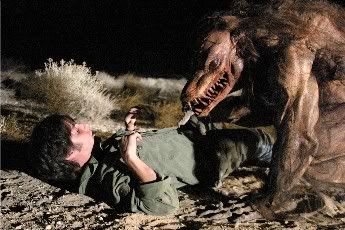
I didn’t necessarily think this film was awesome or incredible by any means, but it was a fun schlocky horror fest. And it was not cringe-worthy, for sure. Monster movie fans check it out. C+.
Finally, I would like to show you this review I found on YouTube. Besides incorrectly assuming this to be a sequel to John Landis’ classic An American Werewolf in London, this guy is, well, an idiot. But a hilarious idiot:
Wednesday, April 23, 2008
The Honest to Blog Truth
Juno (Jason Reitman, 2007) is thoroughly overrated.
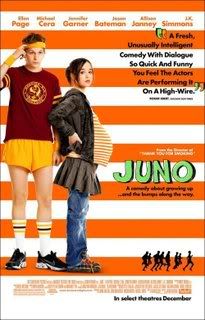
I’ve likely made my share of enemies (or friends) by making this statement.
On paper, I should love this film. I am, for one, all about witty banter and bon mot’s being thrown about. I’m a fan of Jason Reitman’s previous film, the über-satire Thank You For Smoking (Reitman, 2004.) I also usually like “indie comedies” as much as an idiotic subgenre distinction that is.
The problem, here, lies in the script. And, in particular, the screenwriter, Diablo Cody.
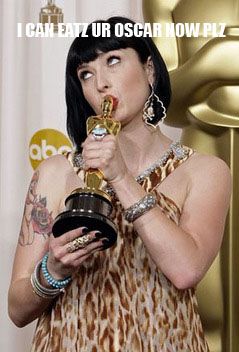
So, as the above will establish, I speak fluent Internet.
Now, what exactly is the problem with this script? For one, characterization. The vast majority of the characters share far too many diction choices to keep me (at the least, and I hope others) from noticing a few too many similarities.
Two, this is the big thrust here:
NOBODY TALKS LIKE THAT. EVER! NOBODY!

Perhaps, if Juno were something of mild or moderate acclaim, I could forgive the flaws of this film. However, this is a film that won an Academy Award for Writing. I find this personally mind-boggling. It might be passable, even better than many.
The problem for me with the writing lies in diction. Almost every character has an extremely thorough vocabulary (throwing words like “shenanigans” at extremely jarring moments,) fast-paced dialogue, and “World Series of Pop Culture” levels of pop culture literacy.
I believe this film could have been about 20x better if: 1) a few more drafts had been attempted; 2) perhaps another writer had been brought on board.
With that in mind, here is my MST3K reading of the Juno screenplay. You can find a copy yourself here www.ellen-page.net/presskits/Juno_Script.pdf:
Following are my notes, before I give up out of depression:
Page 1. Scene 1.
Rule 1: keep your action boxes as small as possible. I try to limit mine to 4 lines. 9 is pushing it, but acceptable. “It’s FALL.” Why is that capitalized? She overdescribes “she winces and shields her eyes from the glare of the sun.” Everything’s a little over-described. And, yes, I graduated college too. But I don’t go throwing around words like “fetid”
Rule 2: Dusk?! Really? Dusk?!
Scene 2.
In italics for no real reason.
Scene 3.
“We see...” Who sees?
Page 4
Scene 9.
(Examining stick) should be on it’s own line.
Page 12:
“Sound the gong of awkwardness”? Figurative language is find when you’re writing a novel, but screenplays need to be a tad more technical.
Page 14:
Juno’s bit of business here is the first line I’ve actually liked…14 pages in. Despite the fact she’s on a hamburger phone. (In the marginalia should be notes like “Ooh, I’m so quirky!”)
Page 15:
The character of Juno’s father is somewhat troubling to me.
Page 21:
Look at this page of dialogue. There’s nothing quite so exciting as seeing two people talk to each other in large blocks (12 lines?!).
And that’s all I can do with a clean conscience.
I realized I should say something nice about this movie. Structurally, it is passable. I mean, the problems of the first act are set up within the first 20, so she’s got that going for her.
Much like the character yourself, Juno tries SO HARD to convince you how cool and hip and indie it is. However, once you get beyond that, there is literally 0 substance to back it up.
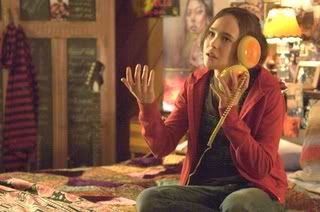
In conclusion, Hamburger Phone, Schmamburger Phone.

I’ve likely made my share of enemies (or friends) by making this statement.
On paper, I should love this film. I am, for one, all about witty banter and bon mot’s being thrown about. I’m a fan of Jason Reitman’s previous film, the über-satire Thank You For Smoking (Reitman, 2004.) I also usually like “indie comedies” as much as an idiotic subgenre distinction that is.
The problem, here, lies in the script. And, in particular, the screenwriter, Diablo Cody.

So, as the above will establish, I speak fluent Internet.
Now, what exactly is the problem with this script? For one, characterization. The vast majority of the characters share far too many diction choices to keep me (at the least, and I hope others) from noticing a few too many similarities.
Two, this is the big thrust here:
NOBODY TALKS LIKE THAT. EVER! NOBODY!

Perhaps, if Juno were something of mild or moderate acclaim, I could forgive the flaws of this film. However, this is a film that won an Academy Award for Writing. I find this personally mind-boggling. It might be passable, even better than many.
The problem for me with the writing lies in diction. Almost every character has an extremely thorough vocabulary (throwing words like “shenanigans” at extremely jarring moments,) fast-paced dialogue, and “World Series of Pop Culture” levels of pop culture literacy.
I believe this film could have been about 20x better if: 1) a few more drafts had been attempted; 2) perhaps another writer had been brought on board.
With that in mind, here is my MST3K reading of the Juno screenplay. You can find a copy yourself here www.ellen-page.net/presskits/Juno_Script.pdf:
Following are my notes, before I give up out of depression:
Page 1. Scene 1.
Rule 1: keep your action boxes as small as possible. I try to limit mine to 4 lines. 9 is pushing it, but acceptable. “It’s FALL.” Why is that capitalized? She overdescribes “she winces and shields her eyes from the glare of the sun.” Everything’s a little over-described. And, yes, I graduated college too. But I don’t go throwing around words like “fetid”
Rule 2: Dusk?! Really? Dusk?!
Scene 2.
In italics for no real reason.
Scene 3.
“We see...” Who sees?
Page 4
Scene 9.
(Examining stick) should be on it’s own line.
Page 12:
“Sound the gong of awkwardness”? Figurative language is find when you’re writing a novel, but screenplays need to be a tad more technical.
Page 14:
Juno’s bit of business here is the first line I’ve actually liked…14 pages in. Despite the fact she’s on a hamburger phone. (In the marginalia should be notes like “Ooh, I’m so quirky!”)
Page 15:
The character of Juno’s father is somewhat troubling to me.
Page 21:
Look at this page of dialogue. There’s nothing quite so exciting as seeing two people talk to each other in large blocks (12 lines?!).
And that’s all I can do with a clean conscience.
I realized I should say something nice about this movie. Structurally, it is passable. I mean, the problems of the first act are set up within the first 20, so she’s got that going for her.
Much like the character yourself, Juno tries SO HARD to convince you how cool and hip and indie it is. However, once you get beyond that, there is literally 0 substance to back it up.

In conclusion, Hamburger Phone, Schmamburger Phone.
Monday, April 21, 2008
Screenwriting 101: Outlying Outlines
Outlines are boring, so much so that I barely want to write about them.
The main point of outlining lies in the fact that you should know what happens next, so you can allude to it in future scenes and not have to worry about dropping your set-up in earlier (more on set-ups and pay-offs in a later entry.)
Now, I have mixed feelings about outlines. Sometimes, the best surprises are the one you the screenwriter yourself don’t see coming. But, for the above reasons, and also for the sheer sanity of trying to write a work of the size and scope of a screenplay (comparable to a novel or other work in certain elements, or to some plays,) outlining is a must.
So this is my outlining method. Some people might need to outline more. Some less. But, this is the amount of outlining that works for me:
I write a description of each scene, what the major “thrust” of that scene is for me in terms of narrative. This is usually two sentences, sometimes less, followed by an expected page length (which I use to keep in mind towards those act lengths I discussed earlier.)
If I think of a scene that fits in somewhere in between previously written scenes, I just put it in. This is usually after I get farther beyond. Scenes can always be removed during the rewriting process.
So, let’s pretend I’m making a movie called “It Came From Monster Island” about a rag tag group of misfits stranded on an island hunted by a geneticist’s rogue creation. (This is not actually a script I’m working on. I just made that up.)
Part of an outline might look something like this (this is my individual format, you can get as involved or uninvolved in your format as you like:)
Act I
1. Spinning newspaper: “Mysterious Disappearances Baffle Police” (2 lines.) [This is a minor point, but I like if I have an idea for a device like this to write it down with its own point. Typically they are few and far between as it is, or should be.]
2. Newsroom. Ball-busting female reporter Linda Larsen is furious she’s been reassigned off the story. Her manager tells her he’s putting his grandstanding nephew Percy on the case. (3 pages)
3. Larsen confronts Percy in the parking lot outside their office. He tells her she should be happy to avoid this, but she’s adamant. He leaves, and she follows him. (2 pages.)
4. Interview with the police. Capt. Kroger says they have no new leads, but proceeds to lead a SWAT team on boats out to a small island. Percy follows them, Linda stows aboard. (3 pages.)
5. Three gnarly surfer dudes get caught up in a riptide and nearly drown, Percy saves them. (2 pages.)
6. A rogue storm seems to come out of nowhere, crashing both boats on Monster Island. (1 pages.) [note it’s about 11 pages in. It is my sincere belief that if a film is called “It Came From Monster Island” one should get to Monster Island as close to the first 10 pages as possible. This might not even be how I write it, but it’s a guideline for how long I’m shooting for my scenes to be.]
7. The police boat crew is trying to contact the mainland to no avail when they spot Percy, Linda, and the surfers. There’s a brief standoff, but they need to work together to survive. The police want to make camp. But Linda and the surfers think it would be better to ask for help in that creepy laboratory on the island. [3 pages.]
8. The police and Percy talk about the mysterious disappearances possibly being linked to the activities of Dr. Gene Splicer. [2 pages.]
9. FLASHBACK: Dr. Splicer’s creepy experiments. [1 page.]
10. Linda and the surfers explore the lab, finding creepy dead experiments and a very live monster! Linda escapes while the surfers seem to be at the monster’s mercy. [5 pages.]
[Also, note the appearance of monsters by around page 20, near or on the end of the first act]
ACT 2
And so on.
So, that’s one way to outline. Next week, I’ll discuss Set-Ups and Pay-Offs. Good writing!
The main point of outlining lies in the fact that you should know what happens next, so you can allude to it in future scenes and not have to worry about dropping your set-up in earlier (more on set-ups and pay-offs in a later entry.)
Now, I have mixed feelings about outlines. Sometimes, the best surprises are the one you the screenwriter yourself don’t see coming. But, for the above reasons, and also for the sheer sanity of trying to write a work of the size and scope of a screenplay (comparable to a novel or other work in certain elements, or to some plays,) outlining is a must.
So this is my outlining method. Some people might need to outline more. Some less. But, this is the amount of outlining that works for me:
I write a description of each scene, what the major “thrust” of that scene is for me in terms of narrative. This is usually two sentences, sometimes less, followed by an expected page length (which I use to keep in mind towards those act lengths I discussed earlier.)
If I think of a scene that fits in somewhere in between previously written scenes, I just put it in. This is usually after I get farther beyond. Scenes can always be removed during the rewriting process.
So, let’s pretend I’m making a movie called “It Came From Monster Island” about a rag tag group of misfits stranded on an island hunted by a geneticist’s rogue creation. (This is not actually a script I’m working on. I just made that up.)
Part of an outline might look something like this (this is my individual format, you can get as involved or uninvolved in your format as you like:)
Act I
1. Spinning newspaper: “Mysterious Disappearances Baffle Police” (2 lines.) [This is a minor point, but I like if I have an idea for a device like this to write it down with its own point. Typically they are few and far between as it is, or should be.]
2. Newsroom. Ball-busting female reporter Linda Larsen is furious she’s been reassigned off the story. Her manager tells her he’s putting his grandstanding nephew Percy on the case. (3 pages)
3. Larsen confronts Percy in the parking lot outside their office. He tells her she should be happy to avoid this, but she’s adamant. He leaves, and she follows him. (2 pages.)
4. Interview with the police. Capt. Kroger says they have no new leads, but proceeds to lead a SWAT team on boats out to a small island. Percy follows them, Linda stows aboard. (3 pages.)
5. Three gnarly surfer dudes get caught up in a riptide and nearly drown, Percy saves them. (2 pages.)
6. A rogue storm seems to come out of nowhere, crashing both boats on Monster Island. (1 pages.) [note it’s about 11 pages in. It is my sincere belief that if a film is called “It Came From Monster Island” one should get to Monster Island as close to the first 10 pages as possible. This might not even be how I write it, but it’s a guideline for how long I’m shooting for my scenes to be.]
7. The police boat crew is trying to contact the mainland to no avail when they spot Percy, Linda, and the surfers. There’s a brief standoff, but they need to work together to survive. The police want to make camp. But Linda and the surfers think it would be better to ask for help in that creepy laboratory on the island. [3 pages.]
8. The police and Percy talk about the mysterious disappearances possibly being linked to the activities of Dr. Gene Splicer. [2 pages.]
9. FLASHBACK: Dr. Splicer’s creepy experiments. [1 page.]
10. Linda and the surfers explore the lab, finding creepy dead experiments and a very live monster! Linda escapes while the surfers seem to be at the monster’s mercy. [5 pages.]
[Also, note the appearance of monsters by around page 20, near or on the end of the first act]
ACT 2
And so on.
So, that’s one way to outline. Next week, I’ll discuss Set-Ups and Pay-Offs. Good writing!
Labels:
screenwriting 101
Friday, April 18, 2008
It Came From Forgotten Filmography Fridays 5
The Naked Jungle (dir. Byron Haskin, 1954.)
Brief Synopsis: Charlton Heston vs. army ants. Watch out ants.
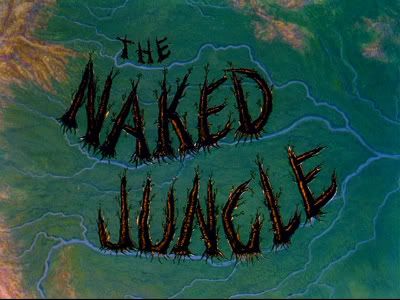
In a previous article I discussed Charlton Heston, one of the great leading men of our day, despite any disagreeable gun control policies. He is our first and last line of defense against damn, dirty apes, atomic mutants, and the Roman Empire.

Charlton Heston has a bad knack for playing Hispanic characters. For example, see him as Inspector Vargas in the classic Orson Welles thriller A Touch of Evil (“¿Dónde está mi esposa?”) Or, here.
I was at first dismayed when I realized Charlton Heston was not fighting gigantic ants, as befitting his stature. However, fighting millions of regular sized ants is an acceptable substitution.
Heston is a double-hamfisted stoic agent of patriarchy and order, as per his modus operandi, as Christopher Lenginen, owner of a cocoa plantation in 1901 Brazil, who brought “civilization” to those damned godless indiginious savages.
The boat captain played by Romo Vincent is very stereotypically Hispanic, complete with curly mustache. We meet him as he brings the mail-order bride of Mr. Leninger (played by Eleanor Parker.) She’s a strong-willed American widow, and Leninger doesn’t want her (but, of course, that will change.)
Abraham Sofaer plays Incacha. He is Mr. Leninger’s #1 man. This is repeated a few times. Of course, Mr. Leninger has taken care to dress all the “civilized” natives in white. Mrs. Leninger is given Zala, her #1 girl soon enough.
Of course, their relationship is strained to begin with but they respect each other later on, forged in the fires of fighting giant ants.
“I…was married.”
*Musical Sting*
The melodrama is so thick it comes packed with marshmallows and peanut butter.
He encourages her to stay in the house, “where civilization ends.” Even keeping in mind the times, the colonialism motif runs rampant in this film.
Okay, seriously, do I need to tell you who wins? All the bad plantation owners flee the jungle, but Chuck stays and fights because he would punch the director if he didn’t get the chance. If that scene were filmed, he would literally stop filming and start a fight. “Like HELL I’m leaving.” The girl doesn’t want to leave, but old Chuck has to go and do what a man’s got to do (tame the wilderness.)
The fact that the ants are not giant is subdued by the fact that there are millions of them. They are also quite intelligent, apparently (when did this happen? Is conventional wisdom hold ants to be intelligent? Did I miss this memo?)
And, of course, he succeeds. Take that, natures.
This movie is very CHC, but it’s actually pretty good. If you are a fan of two-fisted action, melodrama, and ants, I’d recommend it. B.
Brief Synopsis: Charlton Heston vs. army ants. Watch out ants.

In a previous article I discussed Charlton Heston, one of the great leading men of our day, despite any disagreeable gun control policies. He is our first and last line of defense against damn, dirty apes, atomic mutants, and the Roman Empire.

Charlton Heston has a bad knack for playing Hispanic characters. For example, see him as Inspector Vargas in the classic Orson Welles thriller A Touch of Evil (“¿Dónde está mi esposa?”) Or, here.
I was at first dismayed when I realized Charlton Heston was not fighting gigantic ants, as befitting his stature. However, fighting millions of regular sized ants is an acceptable substitution.
Heston is a double-hamfisted stoic agent of patriarchy and order, as per his modus operandi, as Christopher Lenginen, owner of a cocoa plantation in 1901 Brazil, who brought “civilization” to those damned godless indiginious savages.
The boat captain played by Romo Vincent is very stereotypically Hispanic, complete with curly mustache. We meet him as he brings the mail-order bride of Mr. Leninger (played by Eleanor Parker.) She’s a strong-willed American widow, and Leninger doesn’t want her (but, of course, that will change.)
Abraham Sofaer plays Incacha. He is Mr. Leninger’s #1 man. This is repeated a few times. Of course, Mr. Leninger has taken care to dress all the “civilized” natives in white. Mrs. Leninger is given Zala, her #1 girl soon enough.
Of course, their relationship is strained to begin with but they respect each other later on, forged in the fires of fighting giant ants.
“I…was married.”
*Musical Sting*
The melodrama is so thick it comes packed with marshmallows and peanut butter.
He encourages her to stay in the house, “where civilization ends.” Even keeping in mind the times, the colonialism motif runs rampant in this film.
Okay, seriously, do I need to tell you who wins? All the bad plantation owners flee the jungle, but Chuck stays and fights because he would punch the director if he didn’t get the chance. If that scene were filmed, he would literally stop filming and start a fight. “Like HELL I’m leaving.” The girl doesn’t want to leave, but old Chuck has to go and do what a man’s got to do (tame the wilderness.)
The fact that the ants are not giant is subdued by the fact that there are millions of them. They are also quite intelligent, apparently (when did this happen? Is conventional wisdom hold ants to be intelligent? Did I miss this memo?)
And, of course, he succeeds. Take that, natures.
This movie is very CHC, but it’s actually pretty good. If you are a fan of two-fisted action, melodrama, and ants, I’d recommend it. B.
Monday, April 14, 2008
Screenwriting 101: Act and Scene Construction
Strap on your hardhats! This week, we’re going to talk about two different kinds of construction in screenwriting.
The Act structure is a throwback to theater and to Aristotle. Shakespearean plays had five acts, but most films are said to have three acts, Act 1 being about 20-30 pages (the beginning,) Act 2 being the bulk of the script (60 or so pages, the middle) and Act 3 winding up within 15-20 pages, depending on who you ask (the end.) More accurately, I think, all scripts have a beginning, a middle, and an end.
Why the Beginning of Your Story is Important
You have to get your audience interested. If they lose interest in the beginning there’s little chance of winning them back later on. So, you need to construct a solid hook to draw your audience in, get them fast and hold on to them as long as possible.
Why the Middle of Your Story is Important
Middles have a tendency to be ignored in favor of wrapping up a good ending or setting up a good beginning, but if you can’t maintain the levels of excitement throughout, you’re going to end up losing your audience. This is generally important because the bulk of your story happens here.
Why the End of Your Story is Important
Your story has to end. Eventually. No matter how great your beginning and your middle are, an audience will not forgive a bad ending the way they might a bad middle (even then, a middle that just drags on and on won’t be winning friends and influencing people either.)
Why Scene Construction is Thus So Important
Each part of your story is made up of these smaller segments called scenes. A scene is typically consigned to one location, although things a montage (an interconnected series of very small scenes,) might take place in multiple locations (like, for example, a shopping spree in multiple stores.)
This is my scene construction checklist of things I think about when writing scenes:
MY SCENE CONSTRUCTION CHECKLIST
* What is the theme again?
* What’s the plot? What needs to happen right now in the story?
* How long is this scene supposed to be? (1 page? Half a page? 2 pages? 3 pages? More? How much more? I usually ask myself this while outlining [which also gives me a rough idea about my acts. I can always adjust this later, especially when rewriting.])
* Where are the characters?
* When does this take place (in the narrative and in chronological time. Is it a flashback? A flashforward?)
* Now what needs to happen and how can the characters make that happen?
* Check your dialogue, make sure your characters seem the same from the last scene (or the last scene they appeared in.)
Next week, we’ll discuss outlining. Good writing!
The Act structure is a throwback to theater and to Aristotle. Shakespearean plays had five acts, but most films are said to have three acts, Act 1 being about 20-30 pages (the beginning,) Act 2 being the bulk of the script (60 or so pages, the middle) and Act 3 winding up within 15-20 pages, depending on who you ask (the end.) More accurately, I think, all scripts have a beginning, a middle, and an end.
Why the Beginning of Your Story is Important
You have to get your audience interested. If they lose interest in the beginning there’s little chance of winning them back later on. So, you need to construct a solid hook to draw your audience in, get them fast and hold on to them as long as possible.
Why the Middle of Your Story is Important
Middles have a tendency to be ignored in favor of wrapping up a good ending or setting up a good beginning, but if you can’t maintain the levels of excitement throughout, you’re going to end up losing your audience. This is generally important because the bulk of your story happens here.
Why the End of Your Story is Important
Your story has to end. Eventually. No matter how great your beginning and your middle are, an audience will not forgive a bad ending the way they might a bad middle (even then, a middle that just drags on and on won’t be winning friends and influencing people either.)
Why Scene Construction is Thus So Important
Each part of your story is made up of these smaller segments called scenes. A scene is typically consigned to one location, although things a montage (an interconnected series of very small scenes,) might take place in multiple locations (like, for example, a shopping spree in multiple stores.)
This is my scene construction checklist of things I think about when writing scenes:
MY SCENE CONSTRUCTION CHECKLIST
* What is the theme again?
* What’s the plot? What needs to happen right now in the story?
* How long is this scene supposed to be? (1 page? Half a page? 2 pages? 3 pages? More? How much more? I usually ask myself this while outlining [which also gives me a rough idea about my acts. I can always adjust this later, especially when rewriting.])
* Where are the characters?
* When does this take place (in the narrative and in chronological time. Is it a flashback? A flashforward?)
* Now what needs to happen and how can the characters make that happen?
* Check your dialogue, make sure your characters seem the same from the last scene (or the last scene they appeared in.)
Next week, we’ll discuss outlining. Good writing!
Labels:
screenwriting 101
Saturday, April 12, 2008
It Came From Forgotten Filmography Fridays 4

O Lucky Man! (dir. Lindsay Anderson, 1973)
“Smile while you're makin' it. Laugh while you're takin' it. Even though you're fakin' it. Nobody's gonna know...”
Warner Bros.
Brief Synopsis: British avant-garde musical about coffee (or, more arguably, about nothing,) starring an eerily young Malcolm McDowell.
This week is another musical, this one’s British and about coffee. But before we do anything, I’d like to call your attention to the picture of Malcolm McDowell used as part of the promotional materials (the posters, the DVD covers and so on.) I hope this is intentionally creepy, and not just unintentionally so. This may just be symptomatic of McDowell’s own inherent creepiness. (c.f. the poster.)
Malcolm McDowell plays ambitious coffee salesman Michael Travis, although this is primarily a surreal film critiquing capitalism. The musical numbers primarily cut to the band performing, outside of the narrative content of the story (although not thematically.)
The use of intertitles helps further fracture this narrative, the cuts are very rarely on action, or even temporarily aligned. However, these rarely seem jarring, since there is some kind of strong narrative tie keeping the material together. These set pieces are themed on subjects like sex, family, wealth, military, prison, science, and religion.
As a warning for those renters, this movie is definitely not rated foarr a reason. There’s quite a bit of nudity about half an hour in, which likely would not have flied with US censors at the time. Some of the narrative seems rightfully surreal or bizarre, which might not be everyone’s cup of tea. The symbolism gets a little too nail-on-the-head and heavy-handed too, at times (like the scene at the church.) And the blackface. Can’t be forgetting about that.
Helen Mirren has a bit part too.
Also, this movie is LONG. Very long. And it makes me compelled to make this review as short as possible.
There are also a lot of strange parallels here and with Kubrick’s A Clockwork Orange besides McDowell’s presence. The court scenes, the scene with him falling out the window are strangely similar.

Okay, maybe not too similar.
That being said, I sort of liked this movie, I’d recommend it to a fan of musicals, or someone wanting to see a surreal avant-garde critique of capitalism. B-.
Yeah, that's what this movie felt like.
Monday, April 7, 2008
Screenwriting 101: It Gives You Character
In a portion of Tom Shales’ book Live from New York that I’m too lazy to properly cite, one of the writers in the shows’ early period recounts working with Jim Henson’s Muppets for a recurring segment, and, when proposing a bit of dialogue for one of them, the puppeteer said that the character “wouldn’t say that,” much to the writer’s mockery and chagrin. However, in this instance, I really have to agree with the puppeteer. That’s the core of what makes a character a character, knowing what that character would say or do, and what they wouldn’t.
Creating characters can be a really difficult process if you take it the wrong way. If you don’t define your characters enough, your script can seem bland or boring, or worse, the individual characters will blend together. If you define them too much…in all actuality, you can’t overdefine a character, however, you need to know when to focus on the task at hand (writing the screenplay) and not the character biography.
1) Research
Yeah, that sounds boring, but it’ll help. If you’re working on an adaptation, it helps to explore multiple versions or surrounding literature related to the character, to see what’s been done prior. If you’re Chris Nolan, for example, and adapting Batman: The Dark Knight (Nolan, 2008,) and the Joker is your villain, it would help to read multiple authors previous takes on the character, and to use them to produce a composite that might start to create your particular take for that character. Even if you’re not adapting, it helps to know what kind of character you’re making, and how it’s been done before, so you can effectively steal or subvert the audience’s expectations. If you’re making a seductive femme fatale, for example, if you know what’s been done in terms of such a character (perhaps watching a handful of classic noir, for example.)
2) On the Virtues and Limitations of Writing Backgrounds
Some writers I know live by these things, personally I can’t stand writing backgrounds for my characters. As long as it’s relevant to the story at hand, I will make some notes about who they are. Besides, leaving me openings to be creative can be part of the fun. And the audience is not really going to see your background except through how the character acts, so if you know how the character would act in a series of vastly different situations, and anything that’s immediately relevant to the plot (John McClane’s trouble with his ex-wife in Die Hard for example,) that’s really all you need to know ahead of time. The rest I personally fudge on the way, making sure I keep those fudges in mind as I’m writing so they don’t cancel each other out.
How to Make Your Character Stand Out:
Defining a character might seem easy: you might write something like:
JOHN Everyman, 29, valiant, daring, noble of bearing, courageous and gallant, a fountain of talent.
That is just frustrating for the director. How do you represent that visually? The audience is not reading the script, nor are they telepathic. So, provide only details the audience would have (sights and sounds.)
JOHN Everyman, 29, blonde hair, tall, broad shoulders, winning smile. You get a picture of John Everyman immediately, which is what any director or casting director really needs. Now, how do you make him valiant and daring and noble of bearing, courageous and gallant, a fountain of talent?
1) Diction and Syntax
In particular:
Diction: the accent, inflection, intonation, and speech-sound quality manifested by an individual speaker, usually judged in terms of prevailing standards of acceptability; enunciation.
Syntax: the study of the patterns of formation of sentences and phrases from words.
How does your character talk? Do they ask a lot of pointless rhetorical questions? Or are they just so blustering and full of hot air they just employ this same parallel sentence structure? Everyone likes to talk a certain way, it’s an element of how they grew up, how they were raised, and their own personal preferences. They phrase things differently, or choose how they say it differently. Each person has a unique diction and syntax, and part of making a character is realizing that particular diction and that particular syntax.
These things can say a lot about a character. Let’s say two characters, A, and B, are asking a girl out, and both are nervous.
A
Um, well, um, I mean, if you aren’t doing anything on Saturday, well, um, I’ve got this extra movie ticket and I’d love you, er, I mean, I’d like it, yeah, I’d like it very much if you would come, um, um, I mean, go and see it with me. It’s an, um, er, um, um, Jerry Bruckheimer movie.
As opposed to:
B
(Long Drawn Breath, talking rapidly)
So, yeah, I was wondering if you’d like to go with me to this movie thing. It’ll be a lot of fun, it’s a Jerry Bruckheimer movie, full of explosions, y’know, that sort of thing. So I’ll pick you up around eight? No eight’s too late. Six? Six’s too early. Seven and that’s my final offer.
(Deep panting breath)
These two guys are both asking out a girl, and both nervous, but their characters are totally different and recognizable because of syntax and diction.
Dialogue can be as natural or stylized as you feel the situation calls for. I personally try to strike a happy middle between the two, not striving for a 100% accurate version of how people speak (because, let’s be honest, some people can’t talk) or the clipped witty banter of a 40’s romantic comedy (with all respect due to the genius that was Billy Wilder.)
2) It’s the little things
It’s the little details that make us all human. Not having little details makes a character seem flat and lifeless. Give your character some kind of nuance, give them limits or lines they won’t cross, or other minor details that would surprise the viewer or compliment or conflict with what we know. Say, for example, you have a character who’s a total jerk, but in one scene you show him being nice to somebody. (This specific kind of characterization is often called “petting the dog.” If you want to see an extremely heavy-handed version, watch the scenes with Matt Dillon and his father in Crash [Haggis, 2004, not Cronenberg, 1996.])
3) Actions Speak Louder Than Words
It’s one thing to have someone say “So and so is like this or that,” or “So and so wouldn’t do that.” It’s what is generally referred to as “show, not tell.” So, if you have the option of talking about how a character is, but could instead demonstrate through the script’s actions that same trait, it’s more powerful to show how the character is, rather than just describing it.
4) Words Speak Pretty Loudly Too
You may notice, in a lot of movies, the main character will be talking to his friend, and the friend will say: “You know what your problem is Protagonist? You…” and then states the problem the protagonist needs to overcome over the course of the story. It’s cheap, but it works. Especially when backed up by action.
How I Build Characters
This is my personal method for building characters, and it might not work perfectly for everybody, but it works well for me. I utilize all the stuff above, but I do two things to help me.
1) Take It Personal and Make It Personal
I can relate to all of my characters. Every one of them. Not 100%, definitely not, then every character would be me (and a little boring.) But there’s one part of them, at least, that I can identify with, it’s kind of a hook or a latch for me to get into the character’s head, to understand them.
2) The Characters Drive the Action and Not the Other Way Around
When I’m constructing a scene with my characters (next week,) I ask this question: “How would this character respond to this situation? I want this to happen later, but how would he get to that.”
Next week, we get into issues of act and scene structure. Good writing!
Creating characters can be a really difficult process if you take it the wrong way. If you don’t define your characters enough, your script can seem bland or boring, or worse, the individual characters will blend together. If you define them too much…in all actuality, you can’t overdefine a character, however, you need to know when to focus on the task at hand (writing the screenplay) and not the character biography.
1) Research
Yeah, that sounds boring, but it’ll help. If you’re working on an adaptation, it helps to explore multiple versions or surrounding literature related to the character, to see what’s been done prior. If you’re Chris Nolan, for example, and adapting Batman: The Dark Knight (Nolan, 2008,) and the Joker is your villain, it would help to read multiple authors previous takes on the character, and to use them to produce a composite that might start to create your particular take for that character. Even if you’re not adapting, it helps to know what kind of character you’re making, and how it’s been done before, so you can effectively steal or subvert the audience’s expectations. If you’re making a seductive femme fatale, for example, if you know what’s been done in terms of such a character (perhaps watching a handful of classic noir, for example.)
2) On the Virtues and Limitations of Writing Backgrounds
Some writers I know live by these things, personally I can’t stand writing backgrounds for my characters. As long as it’s relevant to the story at hand, I will make some notes about who they are. Besides, leaving me openings to be creative can be part of the fun. And the audience is not really going to see your background except through how the character acts, so if you know how the character would act in a series of vastly different situations, and anything that’s immediately relevant to the plot (John McClane’s trouble with his ex-wife in Die Hard for example,) that’s really all you need to know ahead of time. The rest I personally fudge on the way, making sure I keep those fudges in mind as I’m writing so they don’t cancel each other out.
How to Make Your Character Stand Out:
Defining a character might seem easy: you might write something like:
That is just frustrating for the director. How do you represent that visually? The audience is not reading the script, nor are they telepathic. So, provide only details the audience would have (sights and sounds.)
1) Diction and Syntax
In particular:
Diction: the accent, inflection, intonation, and speech-sound quality manifested by an individual speaker, usually judged in terms of prevailing standards of acceptability; enunciation.
Syntax: the study of the patterns of formation of sentences and phrases from words.
How does your character talk? Do they ask a lot of pointless rhetorical questions? Or are they just so blustering and full of hot air they just employ this same parallel sentence structure? Everyone likes to talk a certain way, it’s an element of how they grew up, how they were raised, and their own personal preferences. They phrase things differently, or choose how they say it differently. Each person has a unique diction and syntax, and part of making a character is realizing that particular diction and that particular syntax.
These things can say a lot about a character. Let’s say two characters, A, and B, are asking a girl out, and both are nervous.
A
Um, well, um, I mean, if you aren’t doing anything on Saturday, well, um, I’ve got this extra movie ticket and I’d love you, er, I mean, I’d like it, yeah, I’d like it very much if you would come, um, um, I mean, go and see it with me. It’s an, um, er, um, um, Jerry Bruckheimer movie.
As opposed to:
B
(Long Drawn Breath, talking rapidly)
So, yeah, I was wondering if you’d like to go with me to this movie thing. It’ll be a lot of fun, it’s a Jerry Bruckheimer movie, full of explosions, y’know, that sort of thing. So I’ll pick you up around eight? No eight’s too late. Six? Six’s too early. Seven and that’s my final offer.
(Deep panting breath)
These two guys are both asking out a girl, and both nervous, but their characters are totally different and recognizable because of syntax and diction.
Dialogue can be as natural or stylized as you feel the situation calls for. I personally try to strike a happy middle between the two, not striving for a 100% accurate version of how people speak (because, let’s be honest, some people can’t talk) or the clipped witty banter of a 40’s romantic comedy (with all respect due to the genius that was Billy Wilder.)
2) It’s the little things
It’s the little details that make us all human. Not having little details makes a character seem flat and lifeless. Give your character some kind of nuance, give them limits or lines they won’t cross, or other minor details that would surprise the viewer or compliment or conflict with what we know. Say, for example, you have a character who’s a total jerk, but in one scene you show him being nice to somebody. (This specific kind of characterization is often called “petting the dog.” If you want to see an extremely heavy-handed version, watch the scenes with Matt Dillon and his father in Crash [Haggis, 2004, not Cronenberg, 1996.])
3) Actions Speak Louder Than Words
It’s one thing to have someone say “So and so is like this or that,” or “So and so wouldn’t do that.” It’s what is generally referred to as “show, not tell.” So, if you have the option of talking about how a character is, but could instead demonstrate through the script’s actions that same trait, it’s more powerful to show how the character is, rather than just describing it.
4) Words Speak Pretty Loudly Too
You may notice, in a lot of movies, the main character will be talking to his friend, and the friend will say: “You know what your problem is Protagonist? You…” and then states the problem the protagonist needs to overcome over the course of the story. It’s cheap, but it works. Especially when backed up by action.
How I Build Characters
This is my personal method for building characters, and it might not work perfectly for everybody, but it works well for me. I utilize all the stuff above, but I do two things to help me.
1) Take It Personal and Make It Personal
I can relate to all of my characters. Every one of them. Not 100%, definitely not, then every character would be me (and a little boring.) But there’s one part of them, at least, that I can identify with, it’s kind of a hook or a latch for me to get into the character’s head, to understand them.
2) The Characters Drive the Action and Not the Other Way Around
When I’m constructing a scene with my characters (next week,) I ask this question: “How would this character respond to this situation? I want this to happen later, but how would he get to that.”
Next week, we get into issues of act and scene structure. Good writing!
Labels:
screenwriting 101
Saturday, April 5, 2008
In Memory
Charlton Heston has passed away at the age of 84. I may not agree with all of his politics, but as one of the great leading men, I honor his distinguished career. I bet he’s punching out Commies with John Wayne now.
You maniacs!
Thursday, April 3, 2008
It Came From the Forgotten Filmography Fridays 3
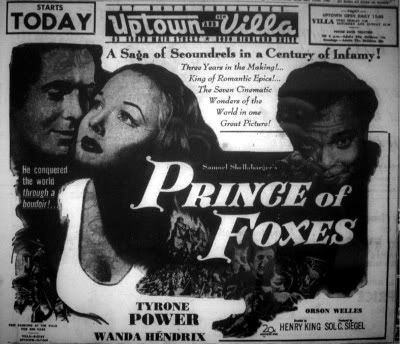
Prince of Foxes (dir. Henry King, 1949)
Distributor: Twentieth Century Fox
“One of the most passionate dramas of all time!”
Brief Synopsis: Tyrone Power, Orson Welles, Wanda Hendrix, action, swashbuckling, intrigue, Renaissance Venice, love, betrayal, “One of the most passionate dramas of all time!”
This week’s It Came From the Forgotten Filmography Fridays is a big studio release from the end of the Golden Age of Hollywood, Prince of Foxes. For those not totally aware of the history, this is a very interesting time for film, after the Second World War but before the decline from the 60s related to television (and bloated productions like Cleopatra [Mankiewicz, 1963]) to early-70s (when a lot of the big name directors of today got their starts.) What drew this film for me was Orson Welles circa 1950, when he was at the peak of his game. As an actor, this film comes around his work in The Lady from Shanghai (Welles, 1947.) This also predates the bloated, later, Welles who has his own particular appeal (like in A Touch of Evil [Welles, 1958]). I’m a huge fan of Welles, as most film people are, but add to that some swashbuckling and adventure, and, well, I’m already sold.
The tagline is a little hyperbolic: “One of the most passionate dramas of all time!” Wow. Take that in for a moment.
The story takes place in Renaissance Italy in 1500 during the time of the Borgias, and was shot in black and white (meaning it was not meant to be a big picture despite some pretty big name draws.) The opening says every shot, interior and exterior was shot on location, if possible in the actual locations. This is CHC (Classical Hollywood Cinema) at its CHC-iest.
Tyrone Power is Capt. Orcini, the dashing protagonist who is “Quick at deceit as a fox, grace of a dancer, wrist of an assassin, with little regard for good faith” Orcini is more a fox than his master knows, a conning bandit prince. Orson Welles is the antagonist, in transition to his portly bearded period as Duke Borgias, desiring to unify Italy under his rule.
Welles is, as always, a fairly amazing actor, especially playing these grandiose, larger-than-life characters. His villains often seem the heroes of their own narratives, as often as his heroes seem the villains of others. Welles description of the Prince of Foxes he needs in the opening is quite amazingly well written. The script, penned by Milton Krims, is full of witty wordplay and swashbuckling action. Although far from naturalistic, the dialogue is extremely compelling (this almost is turning into a Screenwriting 101. That should be the last I mention the writing.)
The lighting is fairly drab, perhaps coming from using these natural locations. The costumes and production design though, seem pretty decent, and the camerawork and direction is good, if traditional in the sense of the craftsmanship that comes from these anti-auteurs in this studio period.
We get a whirlwind look through Italy, from Venice, to Ferrara. Many of the locales are very beautiful, but oftentimes, the focus seems more on Tyrone Power actually being in these locales than it is the locale (this is especially true in Venice.)
Repeatedly, the discussion regards “the end justifying the means,” of course, as our hero falls in love with the beautiful Lady Camilla Verano (Wanda Hendrix,) he begins questioning that idea, especially as he betrays his master in favor of her. The story goes into somewhat predictable military action after that, and setting up the Orcino/Verano relationship with the death of the husband. It all falls into place neatly, with “there’s no honor in deceit.” Very neatly.
This is exactly my reasoning why this column exists: to find good movies nobody’s ever heard of. This isn’t great, it won’t change your life, but it’s a solidly good film. B+.
Wednesday, April 2, 2008
The Greatest Movie Ever Made
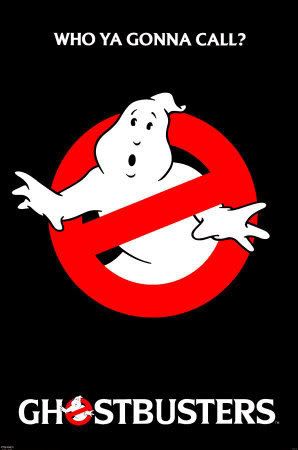
Wait, hear me out on this one.
I’d like to get very high-minded and technical to begin with. I believe it’s my right, I’m kind of paying through the nose and suffering my way through a lot of theory. And you guys can get an advanced humanities education vicariously through me. A language is any system of communications that we as people use to discuss and contextualize reality. What does any of that have to do with film? Or Ghost Busters (Reitman, 1984)? If you believe Christian Metz, film is like a language. Then, taking this argument further, film is a conversation between audience. In addition to that, we have meta-discourse (discourse about the discourse) like this blog, or “On the Virtues or Limitations of Montage” or Ain’tItCoolNews or whatever. Talking about an object that is talking about an object (linguistics would be a similar field. Or history.) Language (and, thus, film, stick with me,) is not a concrete, absolute, presentation of reality, as a matter of fact, it’s a representation, or, rather, an attempt to represent concrete reality, a representation that at times fails to adequately convey that thing (which is not a technical term, mind you.) That thing might be all sorts of things, it is something that we can’t completely or purely represent; it is unrepresentable. “But, again, Derek,” you may ask, “what in the world does that have to do with Ghost Busters and why is it the greatest film ever made?”
Before I further qualify this, there is the issue of that old selectively memory known as nostalgia. I watched the original Ghost Busters on VHS back in the day, I was about 4 when Ghost Busters II (Reitman, 1989) graced the big screen, and I did not see it in full regalia (jumpsuit, proton pac, goggles,) primarily because I had embarrassed my parents adequately by parading around everywhere else like I was a paranormal eliminator. When my Dad asked if I would be scared of the ghosts, I held out my hand and said “Don’t worry, Dad. I’ve got my finger.”
But this doesn’t capture the extent I partook in the Ghost Busters discourse.
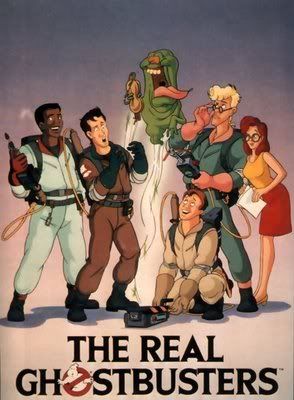
I watched the cartoon.
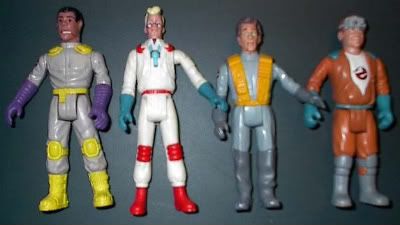
I owned the action figures (and the firehouse playset.)

I drank Ecto Cooler, even though, as anyone who drank Ecto Cooler can attest, Ecto Cooler is disgusting! And it also used to stain pretty much anything it touched.
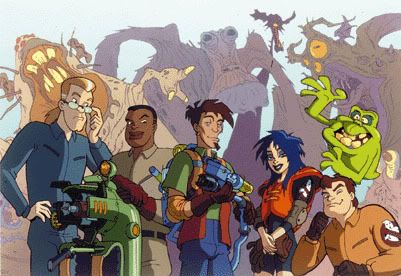
Even when I was older and they made the “eXtreme Ghost Busters" cartoon show, with (I’m not joking here): a goth girl; a sarcastic Puerto Rican guy; a guy in a wheel chair (he’s the guy who’s lower half is missing in this picture;) and the token black guy (who if he wasn’t Winston’s son, really should have been;) and they were mentored by
So…yeah. I might be a little bit biased.
But that’s exactly why this is perfect for what I’m talking about. Ghost Busters, for my little child self was a language, a discourse. But what about?
Also, while we’re at it, unlike many of my favorite parts of my childhood, Ghost Busters stands up as a legitimate work. I watch Ghost Busters now and I feel nostalgic, and I can watch the movie now and I enjoy it differently (most of the jokes flew way over my head, although I knew Bill Murray had something intrinsically funny to him.) But, why the appeal? What made me so attracted to this show when I was younger?
It’s because I was terrified. I’m going to leave a lot of skeletons in the closet (where they mostly deserve to stay, and also, if I really get into it, I’ll start having to pay you exorbitant fees at an hourly rate to sit on a couch and nod when I talk,) but I have and had a lot of issues and fears. I was afraid of a lot of things, and ghosts were an easy point for me to transfix on and fear instead of those things that really, really, frightened me that I repressed. I had a ghostbuster’s Ghost Zapper:
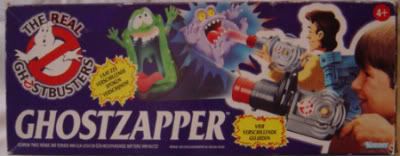
That would project an image of a ghost onto the wall. When I was little I used the light this made to put up ghosts and make sure there were no real spooks, specters, or ghosts waiting to get me. I’d make a horrible pun about psychological projection here, but instead, I will just say I would and have you imagine it.
So, that’s reason #1: Ghost Busters provided me a discourse with which to discuss unrepresentable fears and anxieties. After all, even as a child I had the narrative expectation that the Ghost Busters would be able to vanquish those monsters they had unleashed in my childhood psyche.

In summation, Busting Makes Me Feel Good.
Now, you might be saying here, “But, Derek, you just proved why you liked Ghost Busters. What are its technical merits?” I’m glad you asked. (And, by the way, if you are that concerned with technical merits and aesthetics, I’d recommend you read any of the Neo-Formalists [David Bordwell, Kristin Thompson, as examples.] That’s right up their alley.)
1) The Special Effects
Its easy in todays’ CGI world to dismiss the special effects, but, at the time, Ghost Busters was definitely pushing the envelope in terms of the effects. Sure, we savvy viewers can spot when stop motion puppets are used, or that the proton blasts are drawn onto the film. They’re still fairly convincing, especially barring contemporary referents.
2) Direction
Ivan Reitman has admittedly not had a directorial career that many would consider epic. (The fact that he counts three Arnold Schwarzenagger comedies amongst his directorial résumé [Twins, Junior, and, of course, the epic that is Kindergarten Cop] and some recent clinkers like My Super Ex-Girlfriend [2006] and Evolution [2001] might in fact inspire the opposite reaction.) However, he still displays some impressive craftsmanship regarding scene composition and construction.
For citation’s sake, I would like to reference the scene with Dana and Venkman are talking in front of the fountain (beginning 42:35 in, 3:35 seconds into Chapter 14, until 44:58/5:58.) This scene is pretty decently put together. Also, the sequence with Slimer in the Hotel is also great, and the subsequent success montage. He may not have made Citizen Kane but he is a confident craftsman and that demands notice.
3) Performance
I could go off on how talented Bill Murray is as an actor. But every performance here is pretty inspired. Akroyd’s almost ingratiating optimism, Ramis’ deadpan, Ernie Hudson’s straight man antics, Rick Moranis’ zany loopiness, Annie Potts as the beleaguered Janine, Sigourney Weaver as both Dana and Zul, and even William Atherton as the whiny EPA agent. Great performance after great performance.
4) Writing
The script to Ghost Busters is 9 kinds of amazing. It’s amazingly funny. As children many of the jokes might not be immediately apparent (“Hey, Egon, remember when you tried to drill that hole in your head?” “That would have worked if you hadn’t stopped me,” or “Dropping off or picking up?”) but man were they there. There is hardly a moment without some joke or gag, but still, despite that, the film manages to work as both a comedy and as a supernatural action film (which was definitely the part of the story I was drawn to as a child, as discussed earlier, the busting) and work effectively at both, oftentimes in the same scene, speaks volumes.
5) The Soundtrack
Say what you will about its similarities to “I Want a New Drug,” but the Ray Parker Jr. Ghostbuster’s theme is immediately catchy. On top of that, the actual score produces the proper mix of ambiance, suspense, and excitement.
Finally, I must admit this is something of a dodge or hustle (something the Dr. Venkman character himself would appreciate, after all, he was accused of such by his dean. Also he was called a poor scientist, whose theories are the worst kind of popular tripe, his methods sloppy, and his conclusions highly questionable. Hopefully all of those do not apply to me.) I definitely don’t think Ghost Busters is, in all actuality, the greatest film of all time. I’d like to think it’s good, for the reasons I’ve outlined above, but the point of this article boils down to this: in the discourse on film, or in any subject, a canon is selected of materials that are to be studied and respected and deferred, and material that is not judged worthy of the canon is pushed to the wayside. Some things are worth discussing, some things are not.
Personally, I think that is the dodge/hustle. The study of these sorts of discourses (art, English, music, films, language, what have you) are a study in the media, not a selection committee for what is good text versus what is bad text. So stop and look at something, anything. Ask why you like it. Or ask why you don’t. Or ask both. What is it that makes this film a success, what makes it a failure? And explore the cultural, ideological, social, aesthetic, dimensions of that film. That’s a lot of what I do here at “Son of Double Feature,” and the big secret is, with enough study and work, you could do it too.
Canons are meant to be blown up, anyway.
Subscribe to:
Posts (Atom)